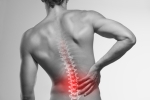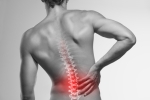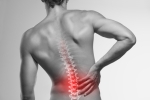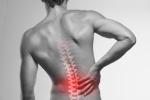Home » Blog
| Stem Cell, PRP, Acupuncture in Queens & Long Island, New York
Blog | Stem Cell, PRP, Acupuncture in Queens & Long Island, New York
Getting osteoarthritis (OA) symptoms under control can take some trial and error. Most treatment plans focus on medication for pain and swelling. But don’t underestimate how much exercise and physical activity can do for you. In addition to participating in low-impact exercises like swimming and light walking, add these five strengthening exercises to your weekly routine.
Read more
When other pain treatments have failed, spinal cord stimulation may be an option - Spinal cord stimulation is a procedure that delivers low-level electrical signals to the spinal cord or to specific nerves to block pain signals from reaching the brain. What Happens During the Spinal Cord Stimulation? During spinal cord stimulation, a device that delivers the electrical signals is implanted in the body through a needle placed in the back near the spinal cord. A small incision is then made to place the pulse generator in the upper buttock. The patient may turn the current off and on or adjust the intensity of the signals. Some devices cause what’s described as a pleasant, tingling sensation while others do not.
Read more
Swimming is an excellent form of low-impact aerobic conditioning that is easy on your back and spine. The buoyancy of the water supports your body's weight, reducing stress on your joints and spine and allowing for a greater range of motion. However, as with all forms of exercise, you need to be careful if you swim for exercise. Many strokes and maneuvers in the pool can actually make your lower back or neck condition worse. Read on to learn about the Do's and Don'ts of swimming if you have back pain.
Read more
Overview of osteoarthritis - Osteoarthritis (OA) is caused by wear and tear on your joints and can be painful and frustrating. It typically occurs in your: Knees, Hips, Lower Back, Neck, and Shoulders. OA causes the cartilage that pads the bones in your joints to deteriorate. It’s common to have decreased mobility as a result. About 27 million Americans have OA. It’s the most common type of arthritis. Arthritis is the No. 1 cause of work-related disability in the United States. It’s important to find the right approach to manage and treat your OA so it doesn’t worsen over time.
Read more
Sometimes pain relief can be accomplished through physical therapy. Physical therapy (PT) involves treatments that focus on the prevention and management of injuries or disabilities. PT helps to relieve pain, promote healing, and restore function and movement. PT is practiced by a professionally trained physical therapist. A physical therapist is a specialist skilled and educated specifically in the evaluation and conservative management, including rehabilitation, of orthopedic, neurologic, and cardiovascular conditions.
Read more
The best back pain treatments in the world won't do much good if your diagnosis is not correct. Causes and treatments for back pain involve a surprisingly complex set of factors, and unfortunately, the experts don't agree on many aspects of back pain. That's why it's important that you continue to educate yourself on your own condition and treatment program—as no one is more motivated to manage your condition than you.
Read more
Knee tightness and stiffness - Knee tightness or stiffness in one or both knees is a common issue. Injuries, mechanical problems, or physical stressors on your knees like extra weight can cause tightness in your knee. Lack of flexibility or strength can also be contributing factors. Knee tightness is especially likely if you’ve had a knee injury or if you have a medical condition such as gout, arthritis, or an infection. Here we talk about different causes of knee stiffness and the basics of what you can do to manage associated symptoms.
Read more
The Truth About Back Pain - It might be a sharp stab. It might be a dull ache. Sooner or later, 8 out of 10 of us will have back pain. And back pain myths are almost as common. Let's set the record straight about what you may have heard.
Myth: Always Sit Up Straight - Slouching is bad. But sitting up too straight and still for long periods can also be a strain on your back. Take breaks a few times a day: Lean back in your chair with your feet on the floor and let your back curve slightly. Even better: Try standing for part of the day, perhaps while you're on the phone or reading.
Read more
The marvelous strength and flexibility that's engineered into your lower back also make it susceptible to developing lots of problems. And because of the many nerves that run throughout the spine and into the rest of your body, a problem in the lower back can lead to leg pain, hip problems and more.
Why is Your Lower Back So Prone to Injury?
The lower back is subject to injury while lifting a heavy object, twisting, or a sudden movement—any of which can cause muscles or ligaments to stretch or develop microscopic tears. Over time, poor posture or repetitive stress can also lease to muscle strain or other soft tissue problems.
Read more
Using sheep, whose knees are similar to human knees, researchers got the meniscus to regrow itself by implanting a biodegradable plastic device to lure stem cells and help them grow. Every year about 1 million people have surgery to repair a tear in the meniscus of their knee, according to the American Academy of Orthopedic Surgeons. It’s an injury that can’t be fully fixed since cartilage doesn’t repair itself very well. Even patients who have surgery often go on to develop arthritis. Some eventually need a knee replacement.
Read more
Love this Post? Spread the World






















